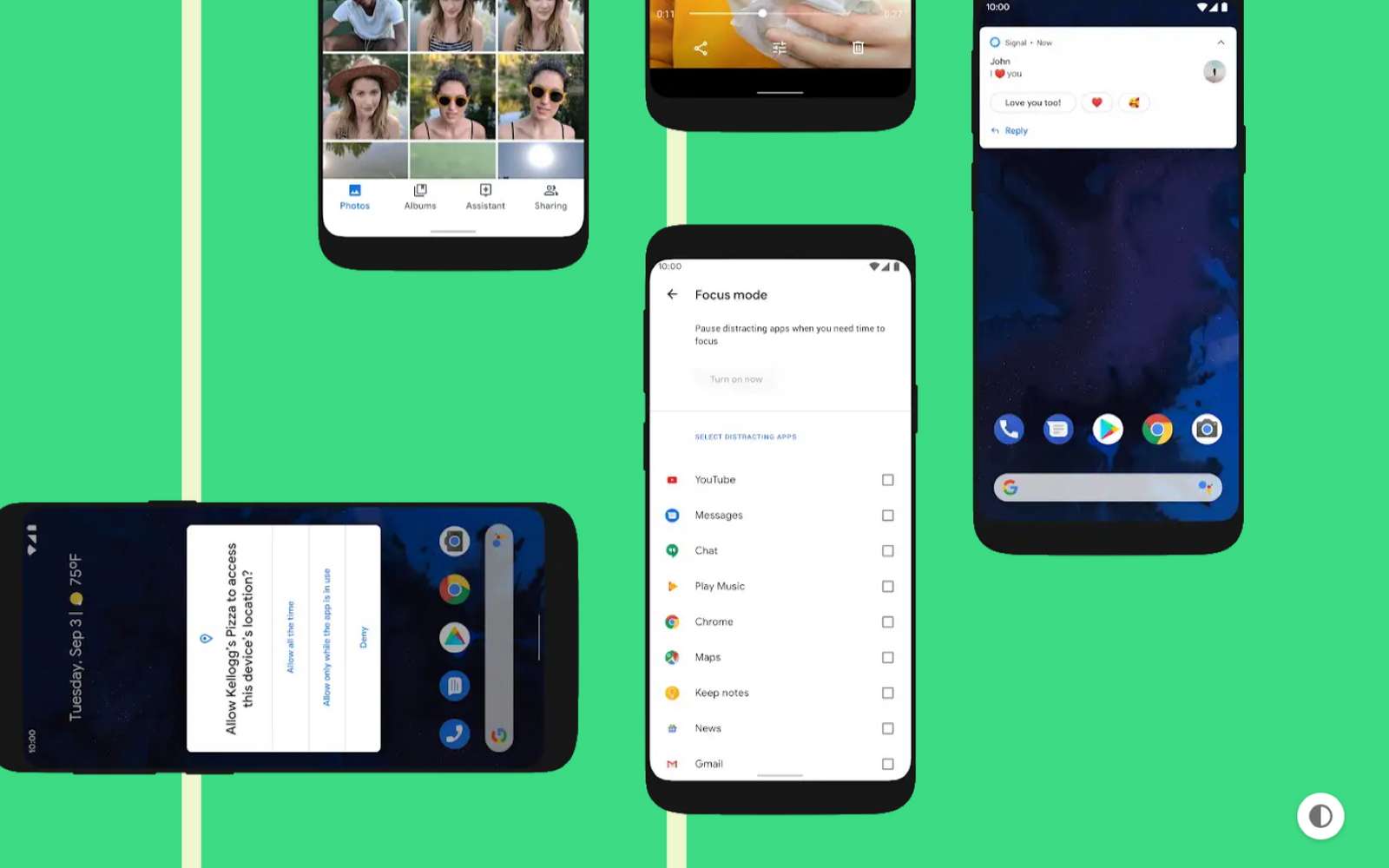After several weeks of use, Futura takes stock of Android 10. On a daily basis, some new features upset the use of Android more than others.
Android 10 landed on Google Pixel in early in September. Therefore, the new mobile OS is deployed gradually on recent mobiles in the form of updates or just installed on some of the latest models. Futura has been using this new version for several weeks, some of which changes the way Android is used. If the vast majority of these novelties are not seen, some of them are flagrant.
Google’s new marketing strategy is now to replace the iconic name of desserts with the number of the Android version. And we must admit that at first, the use of Android 10 does not necessarily cake. The most obvious change is the absence of virtual buttons.
No more button back, button “home” or to switch from one app to another. With Android 10, as with iOS, you have to relearn how to communicate with the interface with gestures. The advantage: the display is extended to the maximum. The disadvantage, learning is not obvious and even after several weeks of use, the operation is sometimes random.

An absence of itchy pimples
To return to the Home screen, place your finger at the bottom of the screen border and drag it up. Problem: the protective shells come to hinder the movement and it is necessary to take again several times. Another concern, according to the apps, this failed gesture can cause an involuntary action.
To view the applications open as thumbnails and scroll or close of a sudden, we must achieve the same movement, but this time maintaining the pressure of the finger in the middle of the screen when done drag the top. For the same reasons, the success of this gesture is random. And often, it is the return to the home screen that snaps.
The most perilous manipulation is that of backtracking. Again, you must slide your finger to the center from the right or left border of the mobile. Again, the possible protective shell hinders the gesture. The biggest concern comes from apps. If the gesture is not taken into account, it can very well generate an involuntary action. The excuse is that it is the case with some Google applications such as Gmail. Dragging your finger in this way on a message will archive it.
Finally, it is possible to switch from one app to another by sliding your finger sideways on the bottom edge of the screen. This gesture is probably the one that works best.